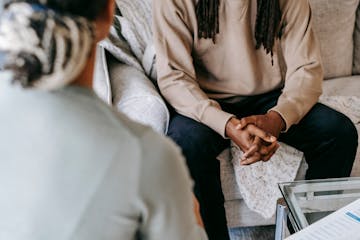Ingroup bias is a psychological phenomenon in which people show preference and favor those who belong to their own group, compared to individuals who belong to outside groups. This type of bias can affect our perceptions, attitudes and behaviors towards others, and can manifest itself in various ways in our daily interactions. Understanding what ingroup bias is, why it occurs, and how we can address it is essential to promoting equality and intergroup harmony in society.
Origin of bias ingroup bias
Ingroup bias has its roots in the natural tendency of human beings to categorize people into groups with which we identify or do not identify. From an evolutionary perspective, this tendency may have emerged as a survival mechanism to identify members of our social group who provide us with support and protection, while alerting us to possible external threats.
When We identify with a particular group, whether due to cultural, ideological, gender, ethnicity or other factors, we tend to develop a more positive perception of the members of our own group, attributing positive qualities to them and dismissing their defects. This process of favoritism toward our group is known as ingroup bias and can have significant implications for our social interactions and decisions.
Manifestations of ingroup bias
Ingroup bias can manifest itself in various ways in our daily lives, both individually and collectively. Some of the most common ways this favoritism can appear include:
1. Stereotypes
Stereotypes are simplified generalizations that attribute specific characteristics to entire groups of people. When we are influenced by ingroup bias, we tend to reinforce and perpetuate positive stereotypes about our own group, while we may adopt negative stereotypes toward outgroups. These stereotypes can influence our perceptions, judgments and behaviors towards others.
2. Discrimination
Ingroup bias can also lead to acts of discrimination, in which members of the in-group are favored over those who belong to out-groups. This discrimination can manifest itself in a subtle way, through implicit prejudices, or more obviously, in overt discriminatory behaviors.
3. Favoritism in decision making
When we are influenced by ingroup bias, we are more likely to make decisions that benefit our own group, even if this means harming other groups. This preference can manifest itself in contexts such as selecting job candidates, allocating resources, or making political decisions, where our prejudices can bias our choices.
Impact of ingroup bias
Ingroup bias can have significant effects in different areas of our lives, from our interpersonal relationships to society as a whole. Some of the consequences of ingroup bias include:
1. Intergroup conflicts
Ingroup bias can lead to conflicts and tensions between different social groups, whether at the local, national or international level. When people show favoritism toward their own group and discriminate against others, it creates divisions and rivalries that can lead to hostilities and even violence. Understanding and addressing ingroup bias is essential to promoting peaceful coexistence between different communities.
2. Inequality and discrimination
Preference for one's own group in decision-making situations can perpetuate inequality and discrimination in various contexts, such as access to employment, educational or health opportunities. When intergroup prejudices influence institutional policies and practices, there is a risk of perpetuating injustices and violating the rights of people belonging to minority or marginalized groups.
3. Deterioration of social cohesion
Ingroup bias undermines social cohesion by dividing the population into opposing groups, undermining mutual trust and weakening bonds of solidarity and cooperation. When people feel excluded or discriminated against due to their membership in a minority group, a climate of mistrust and resentment is created that hinders the building of an inclusive and cohesive society.
Addressing ingroup bias
While ingroup bias is a phenomenon rooted in human psychology, there are strategies to counteract its negative effects and foster greater equality and understanding between different social groups. Some measures that can help address ingroup bias include:
1. Awareness and self-reflection
The first step in combating ingroup bias is to become aware of our own discriminatory tendencies and reflect on how they influence our perceptions and decisions. By recognizing our prejudices and stereotypes, we can work to challenge and overcome those mental barriers that prevent us from relating fairly with others.
2. Exposure to diversity
Exposure to diverse experiences and perspectives can help us expand our understanding and empathy toward people from different backgrounds and social groups. By interacting with individuals who are different from us, we can question our stereotypes and prejudices, thus promoting greater openness and tolerance towards diversity.
3. Education and awareness
Education plays a critical role in preventing and reducing ingroup bias. Promoting awareness and intercultural dialogue in educational, work and community environments can help combat stereotypes and promote mutual respect between different social groups. It is crucial to foster a culture of inclusion and diversity from an early age to build a more equitable and cohesive society.
4. Equality and non-discrimination policies
The implementation of policies and laws that protect the rights of all individuals, regardless of their group membership, is essential to prevent discrimination and promote equal opportunities. Ensuring equal treatment and equity in all areas of society is essential to counteract the harmful impact of ingroup bias and build a more just and supportive society.
Summing It Up
In conclusion, ingroup bias is a psychological phenomenon that can influence our perceptions, attitudes and behaviors towards others, based on identification with our own social group. Recognizing and addressing ingroup bias is critical to promoting intergroup harmony, equality, and justice in society. By becoming aware of our own biases, encouraging diversity and inclusion, and promoting non-discrimination policies, we can work together to overcome divisions and build a more equitable and cohesive society for all.
Author: Psicólogo José Álvarez


